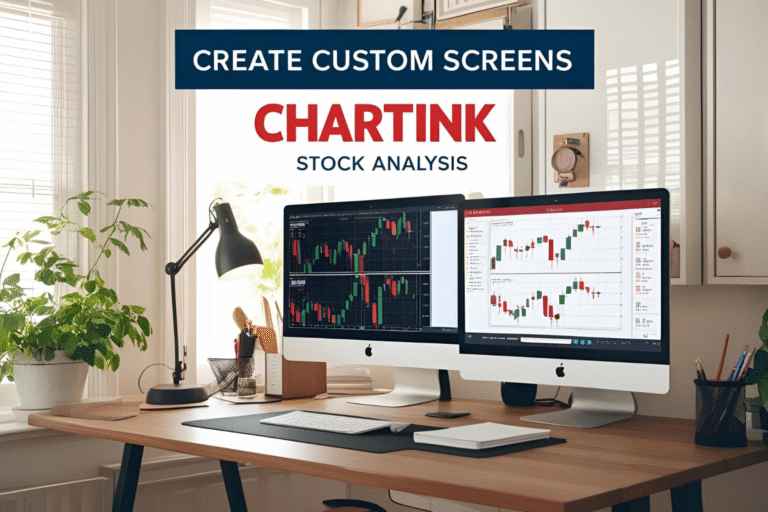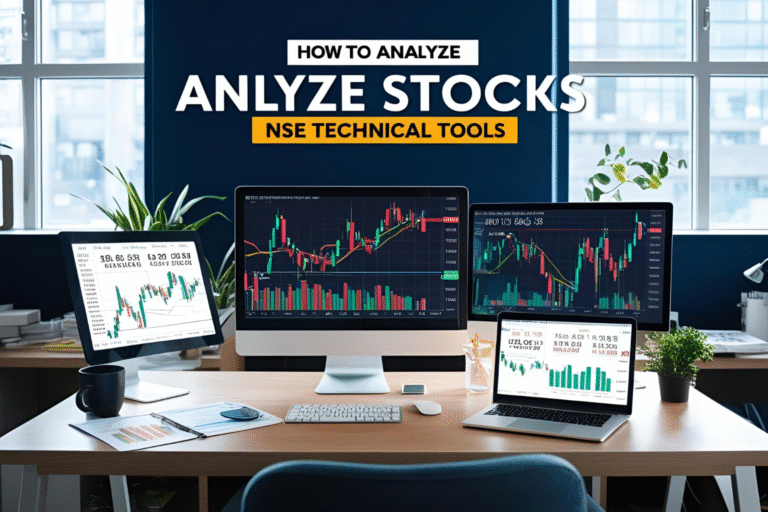How to Set Up Alerts in TradingView for NSE Stocks
Alerts
TradingView is one of the most powerful platforms for technical analysis—and its alert system is a major reason why. If you’re trading NSE stocks, setting up price and indicator-based alerts can help you monitor market conditions without staying glued to your screen.
This tutorial walks you through the step-by-step process of setting up alerts in TradingView, customized for Indian stock traders.
Why Use Alerts in TradingView?
Setting alerts allows you to:
- Get notified when a stock hits a certain price level
- Track when technical indicators give a signal (e.g., RSI crosses 70)
- Monitor trendline or support/resistance breaks
- React faster to trading opportunities
TradingView alerts work on both desktop and mobile, and can notify you via popup, sound, SMS, email, or push notification.
Step-by-Step: Setting Price Alerts for NSE Stocks
Step 1: Open the Stock Chart
Go to TradingView.com and type the NSE stock symbol in the search bar. For example, type RELIANCE, then choose “RELIANCE:NSE”.
Step 2: Choose the Price Level
Hover your mouse on the price scale on the right side. Right-click at the level where you want to set the alert.
Step 3: Click “Add Alert”
A dialog box will open with the alert settings.
Step 4: Customize Alert Conditions
You can set conditions like:
- Price crossing a specific level
- Price moving above/below a value
- Greater than / less than
You can also set:
- Expiration time
- Alert name and message
- Notification method (popup, sound, email, app push, etc.)
Step 5: Create Alert
Click on “Create” and your alert is now live. It will appear in the Alerts panel (Clock icon on the right menu).
Setting Alerts Based on Indicators (e.g., RSI, EMA)
You can also set alerts for indicator values. For example:
Step 1: Add Indicator
Open a chart and click on Indicators, then search and add RSI.
Step 2: Hover Over Indicator Name
In the chart legend area (top left), hover over RSI and click on the three dots (⋯), then choose “Add Alert on RSI”.
Step 3: Define Alert Condition
Set your logic, like:
- RSI crossing 70 (overbought)
- RSI crossing 30 (oversold)
Step 4: Choose Notification Settings
Customize how you want to be alerted.
Types of Alerts Available in TradingView
| Alert Type | Example Use Case |
|---|---|
| Price Level | Alert when RELIANCE crosses ₹2,500 |
| Indicator Alert | Alert when RSI goes above 70 |
| Trendline Break | Alert when price breaks drawn trendline |
| Strategy Alert | Alert from custom Pine Script strategy |
Managing Your Alerts
- Go to the Alerts Tab on the right-hand sidebar
- You can edit, pause, or delete existing alerts
- All triggered alerts are stored in the Alert Log
Note: Free TradingView accounts have a limit on the number of active alerts (usually 1 at a time). Upgrade to a Pro or Premium plan for multiple alerts.
Real-World Use Case: Example Alert
You want to buy INFY when it breaks out above ₹1,500 with high volume. You can:
- Set a price alert at ₹1,500
- Set a volume alert (optional) or combine it in a script
- Choose to get notified via mobile app
Final Thoughts
TradingView alerts are a powerful tool for Indian traders who want to trade smarter, not harder. With the right setup, you’ll never miss key price movements or indicator signals again.
FAQs
Q1: Can I set alerts on the free plan of TradingView?
Yes, but you’re limited to one active alert at a time.
Q2: Do alerts work for NSE stocks in India?
Yes. TradingView supports NSE stock charts and allows setting alerts for them.
Q3: Can I get alerts on my phone?
Yes, through the TradingView app, push notifications, or email.
Q4: Can I set alerts for custom indicators?
Yes, if the indicator is compatible with alert functions (or written in Pine Script).
Q5: How long do alerts stay active?
You can choose a time-based expiration or leave them open-ended until manually removed.






